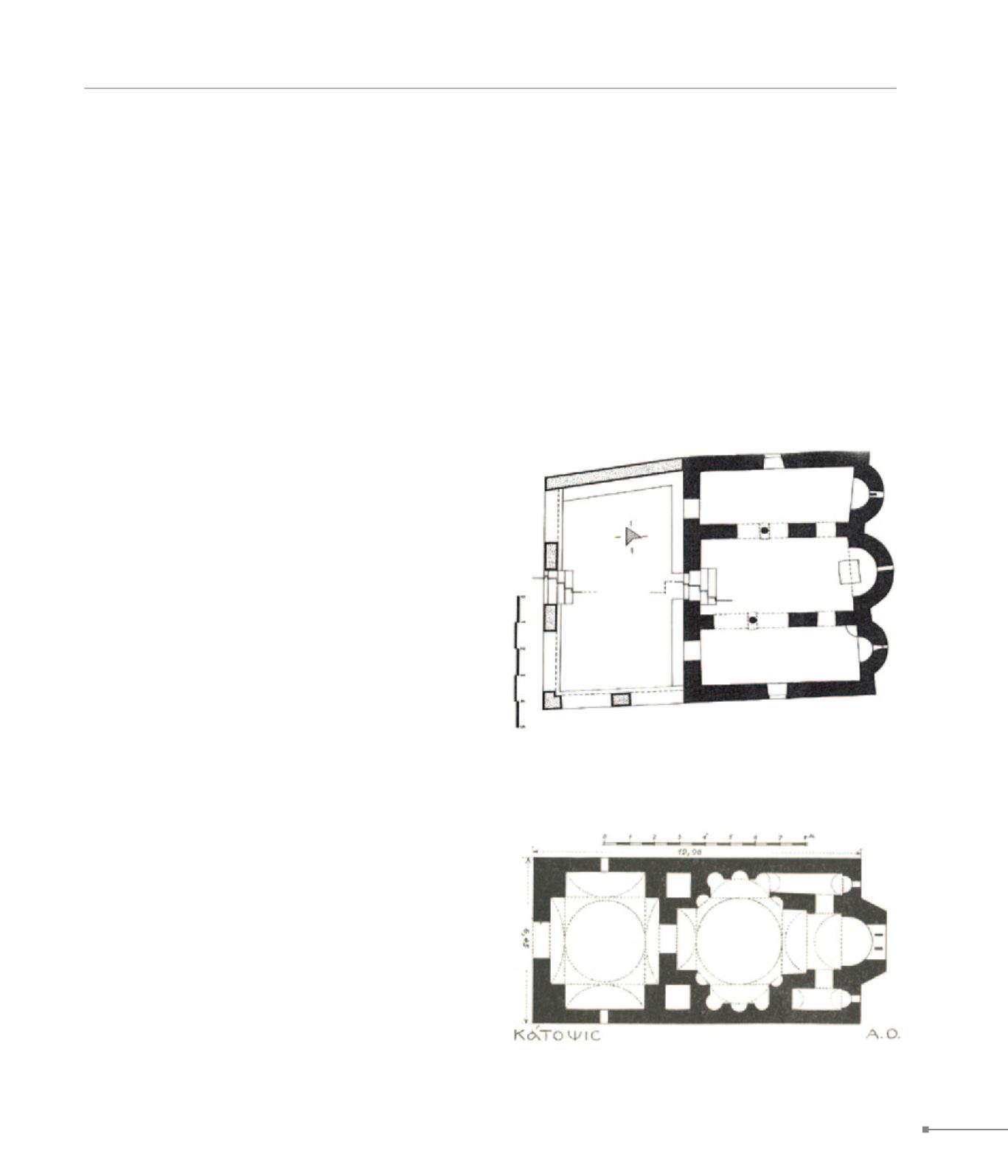
Gerakiou.
Agios.
EUBOEA
163
151. Istiaia, Saint Nicholas, ground plan (Ιστιαία, Άγιος Νικόλαος,
κάτοψη)
153. Aghios, Aghios demetrios, ground plan (Άγιος, ναός του Αγίου
Δημητρίου, κάτοψη)
150.
Gerakiou.
Close to the village Gerakiou (Istiaia), at the site reported by
local residents as property of the old monastery of Aghia Eleni,
Early Christian sculpture and building remains have been de-
tected, attesting to the existence of an Early Christian basilica.
At the site remnants of a small, aisleless, Byzantine church have
also come to light.
151.
Istiaia.
Towards the end of the Late Byzantine period, the inhabitants
of Oreos moved inland for security reasons and established a
new settlement there, at the site of present-day Istiaia (its name
taken from Histiaia, the ruined ancient city nearby). It is most
probable that the great church of Saint Nicholas, featuring re-
markable wall-paintings of the 15th c., was erected at this time
on the NE edge of the city.
152.
Oreoi.
Throughout the Early Christian and Byzantine periods, Oreos
was the most significant urban centre in N Euboea, due to its
key geographical position and the existence of a harbour; it had
been mentioned as an episcopal see since the 5th c. The signif-
icance of the city in the 5th and 6th c. is attested by sculptures
kept in the Archaeological Collection of Oreoi or reused in later
churches in the region. Sculptures and coins of the 12th c. are
evidence of the prosperity at that time. The fortress of Oreoi,
N of the present-day village, is an artificial hill formed from de-
posits, demonstrating inhabitation since antiquity. Most visible
remains of masonry, which include ancient building material,
date from the Late Byzantine period. According to archaeologi-
cal data, the Byzantine city stretched over the region S of the
fortress, around the church of Saint Nicholas, just like the Early
Christian Oreos. In the same region the remains of the aisle-
less, Late Byzantine church of Aghios Vasileios are preserved
beneath the modern church with the same dedication. At the
NW tip of the Gulf of Oreoi, on the islet of Panagia Nisiotissa, the
remains of a small, Late Byzantine church survive.
153.
Agios.
At a distance of 1 km from Agios village is the Byzantine church
of Aghios Demetrios, possibly the catholicon of a monastery.
It is a rare variation: domed church with narthex, the pseudo-
octagon type, dating from the 12th c. In the environs of the farm
at Varvara architectural sculptures lie around a later naiskos.
On Frangokklesia hill, ruins of a Late Byzantine church are vis-
ible today, while Early Christian remnants have been detected
in the same area. This church may be associated with the Holy
Archangels monastery that was ceded to Cistercian monks in
1220 by Ioannis, Latin bishop of Negreponte.


